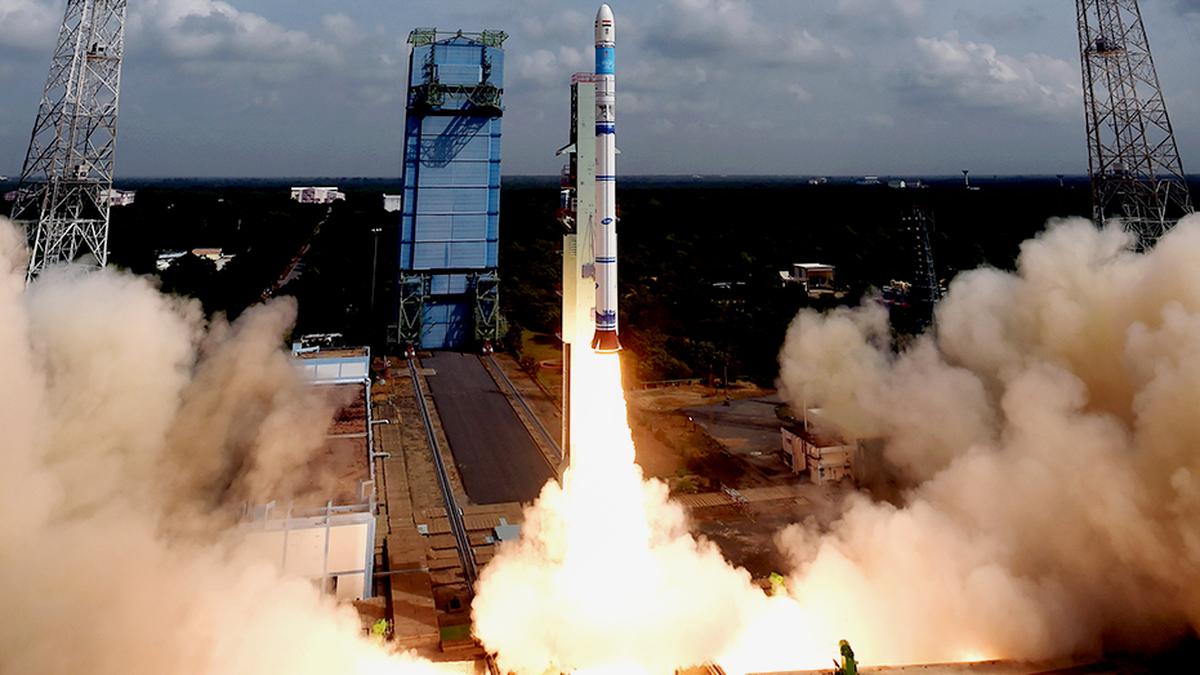- Courses
- GS Full Course 1 Year
- GS Full Course 2 Year
- GS Full Course 3 Year
- GS Full Course Till Selection
- Answer Alpha: Mains 2025 Mentorship
- MEP (Mains Enrichment Programme) Data, Facts
- Essay Target – 150+ Marks
- Online Program
- GS Recorded Course
- Polity
- Geography
- Economy
- Ancient, Medieval and Art & Culture AMAC
- Modern India, Post Independence & World History
- Environment
- Governance
- Science & Technology
- International Relations and Internal Security
- Disaster Management
- Ethics
- NCERT Current Affairs
- Indian Society and Social Issue
- NCERT- Science and Technology
- NCERT - Geography
- NCERT - Ancient History
- NCERT- World History
- NCERT Modern History
- CSAT
- 5 LAYERED ARJUNA Mentorship
- Public Administration Optional
- ABOUT US
- OUR TOPPERS
- TEST SERIES
- FREE STUDY MATERIAL
- VIDEOS
- CONTACT US
PLACES IN NEWS 22nd FEBRUARY 2025
PLACES IN NEWS 22nd FEBRUARY 2025
22-02-2025

Manikaran
Why in news?
- A proposal to divert water from Manikaran, a sacred site for Hindus and Sikhs, to Kasol in Kullu district for a hot bath facility has triggered opposition from local residents.
About Manikaran:
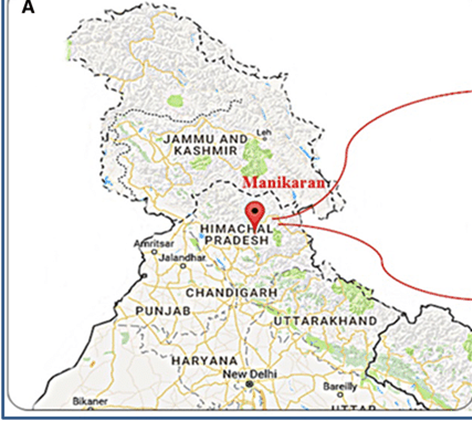
- Location:
- Manikaran, located in Himachal Pradesh's Kullu district, lies along the Parvati River at an altitude of about 1,760 meters.
- Surrounded by the Himalayas, it offers breathtaking landscapes, attracting both pilgrims and tourists.
- The town experiences a cold climate for most of the year, with its unique hot springs providing warmth and comfort.
- Geothermal Activity:
- The geothermal activity in Manikaran results from the region’s position in the seismically active Himalayan belt.
- The movement of the Indian tectonic plate against the Eurasian plate creates fissures that allow underground water to come into contact with hot rocks, heating it before surfacing as hot springs.
- These springs maintain high temperatures throughout the year, with some being hot enough to cook food.
- Cultural Significance:
- Manikaran holds immense cultural and religious significance for both Hindus and Sikhs. Hindus believe that Lord Shiva and Goddess Parvati spent time here, and a lost jewel (Mani) of the goddess was found in the hot waters, giving the town its name.
- The Manikaran Sahib Gurudwara, associated with Guru Nanak, is a major Sikh pilgrimage site. Devotees cook food in the hot springs as part of the langar (community meal) tradition, reinforcing the town’s spiritual appeal.
- Civil Resistance to transfer water:
- The proposal to transfer hot water to Kasol for a commercial bath facility has triggered strong opposition from residents.
- They argue that diverting water could reduce the intensity of Manikaran’s hot springs, affecting religious practices and the local economy.
- Pilgrims believe the sacred waters must remain within the town, while business owners fear declining tourist interest.
- Environmental concerns also arise, as any disruption to the delicate geothermal system could lead to unforeseen consequences.
- Residents emphasise the need to preserve Manikaran’s natural and spiritual essence, resisting commercialisation at the cost of cultural and religious heritage. They demand authorities explore alternative solutions rather than disturb a site of historical, religious, and ecological importance.
Ivory Coast
Why in news?
-
- France has withdrawn from its sole military base in Abidjan, Ivory Coast, amid shifting defence priorities and reduced influence in West Africa following tensions and growing regional calls for sovereignty.
About Ivory Coast:
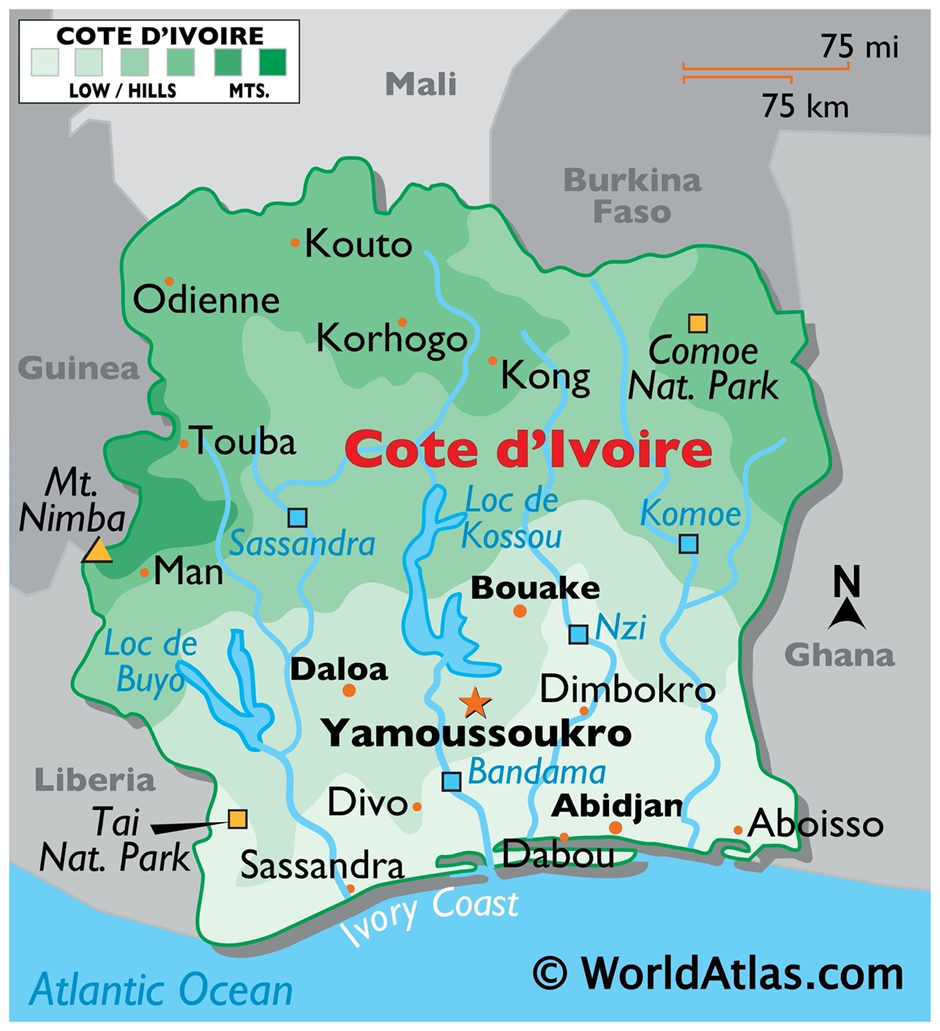
-
- Location and Geography:
- Location and Geography:
- Ivory Coast (Côte d'Ivoire) is a West African country bordered by Liberia, Guinea, Mali, Burkina Faso, Ghana, and the Atlantic Ocean to the south.
- The country has a tropical climate, with coastal plains, plateaus, and dense forests in the south, transitioning into savannahs in the north.
- The Kossou Lake, the largest artificial lake in the country, is an important source of fishing and irrigation. These water bodies support the nation’s economy and contribute to its ecological diversity.
- Potential Natural Resources:
- Potential Natural Resources:
- The country is rich in natural resources, particularly cocoa, coffee, oil, natural gas, gold, and diamonds.
- Ivory Coast is the world’s largest cocoa producer, making agriculture the backbone of its economy.
- The offshore oil and gas reserves have also attracted significant foreign investment, enhancing the country’s energy sector.
- Additionally, gold and diamond mining contribute to export revenues, but concerns over environmental degradation and labour exploitation persist.
- French Military Base and Reason Behind its Withdrawal:
- French Military Base and Reason Behind its Withdrawal:
- France maintained its sole military base on the Ivory Coast in Abidjan, the country’s economic capital.
- Established in 2015, the base houses around 900 French troops and serves as a strategic hub for regional security operations in West Africa.
- French forces used it for logistical support, counterterrorism efforts, and cooperation with Ivorian forces under defence agreements.
- Due to growing regional opposition and declining influence, France’s withdrawal from the Abidjan base is part of a broader reduction in its military presence across West Africa.
- Over the past few years, multiple West African nations, including Mali, Burkina Faso, and Niger, have pushed against French military involvement, accusing France of neo-colonialism and failing to curb terrorism.
- Amid these tensions, Ivory Coast sought greater military autonomy, prompting Paris to pull out its forces and restructure defence cooperation.
- Despite the withdrawal from Ivory Coast, France still maintains military bases in several African nations, including:
- Djibouti (Strategic Red Sea presence)
- Gabon (Regional security operations)
- Chad (Counterterrorism in the Sahel)
- Senegal (Training and defence cooperation)
- These bases remain critical for France’s geopolitical and military strategy, but rising anti-French sentiment in Africa suggests further reductions or shifts in its military engagements.
Mount Dukono
Why in news?
- Mount Dukono, an active volcano in Indonesia's North Maluku province, has erupted, spewing ash and smoke.
About Mount Dukono:
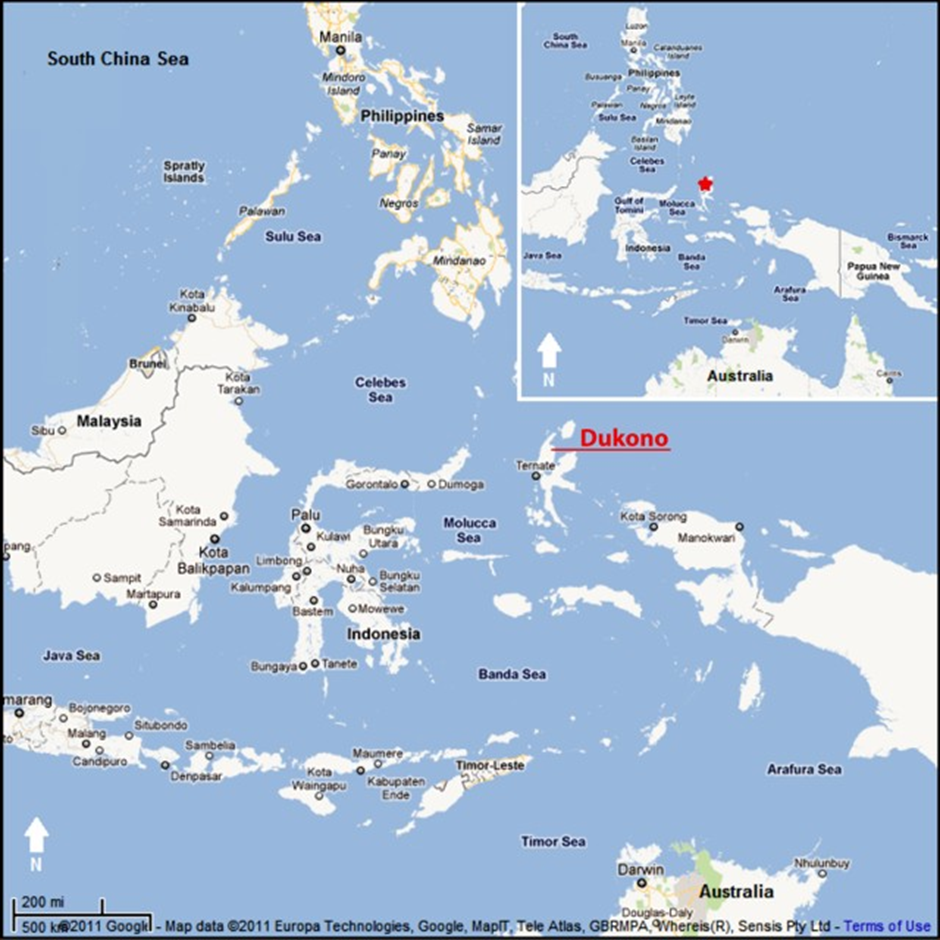
- Mount Dukono is an active volcano located on Halmahera Island in Indonesia's North Maluku province.
- It is part of the Pacific Ring of Fire, a region known for intense seismic and volcanic activity due to multiple tectonic plate interactions.
- The primary reason behind Mount Dukono’s eruptions is the subduction of the Indo-Australian Plate beneath the Eurasian Plate.
- This process generates immense heat and pressure, causing magma to rise and resulting in frequent volcanic activity.
- Dukono is classified as a stratovolcano, meaning it has steep slopes and produces explosive eruptions with ash, lava, and pyroclastic flows.
- Dukono has been in an active state for several decades, with continuous eruptions recorded since the 1930s.
- It frequently emits volcanic ash, smoke, and gases, sometimes disrupting air travel and affecting nearby communities.
- The volcanic ash clouds pose health risks, while lava flows can damage local ecosystems.
Luni River
Why in news?
- The National Green Tribunal (NGT) has taken decisive action to address the environmental concerns in Gujarat’s Rann of Kutch by ordering a comprehensive survey of salt pits and borewells that disrupt the natural flow of the Luni River.
About Luni River:
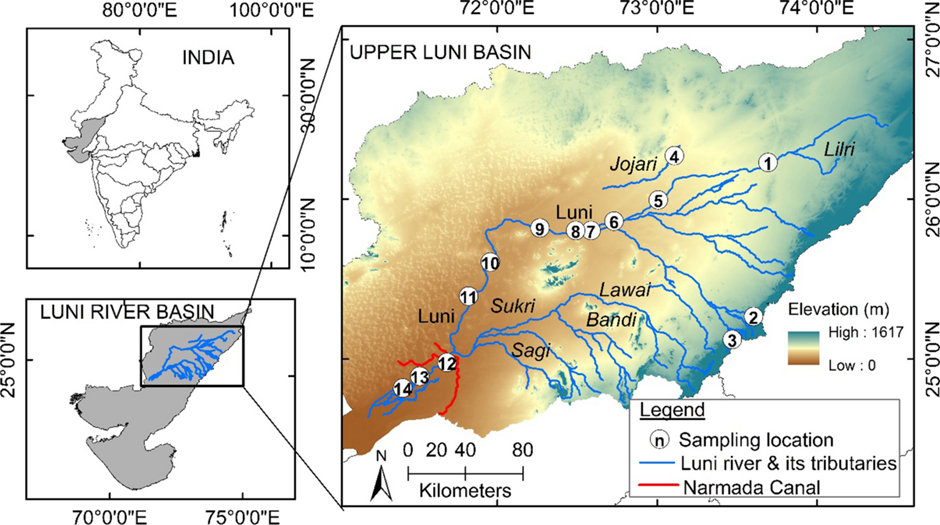
-
-
- Origin and Path:
- Origin and Path:
-
- Luni River is initially known as Sagarmati and originates from the Naga Hills in the Aravalli range near Ajmer, Rajasthan.
- After passing through Govindgarh, it meets its tributary Sarasvati, which originates from Pushkar Lake. From this confluence, the river is called Luni.
- Flowing southwest for about 495 km, it passes through Rajasthan and Gujarat, before disappearing into the Rann of Kutch.
- The river is ephemeral, meaning it flows only during the monsoon and remains dry for the rest of the year.
- Several tributaries, such as Sukri, Jawai, Khari, and Bandi, join Luni, contributing to its seasonal flow.
-
- Historical Significance:
- Historical Significance:
-
- The Luni River basin has been home to ancient civilizations, including the Indus Valley Civilization sites like Balathal and Kalibangan.
- Several Rajput and Marwar settlements flourished along its banks, relying on its waters for agriculture and trade.
- Important towns such as Jodhpur, Barmer, and Pali developed due to the river’s historical role in sustaining human habitation.
- The river facilitated caravan trade routes, linking Rajasthan with Gujarat and beyond.
-
- Issue of Salt Pans and Borewells:
- Issue of Salt Pans and Borewells:
-
- The high salinity of the Luni River, especially in its lower reaches, makes its water unfit for drinking and irrigation.
- Over-extraction of groundwater through borewells has led to increased salinization, reducing soil fertility in agricultural lands.
- The presence of natural salt pans in the Luni basin contributes to further evaporation and salt accumulation, worsening the water quality.
- Unsustainable water usage and climate change have intensified the desertification process, affecting local livelihoods.
- Efforts to manage water conservation and saline soil reclamation are crucial to sustaining the ecological balance in the Luni River region.
Coringa Wildlife Sanctuary
Why in news?
- Officials and stakeholders are discussing an Eco-Sensitive Zone (ESZ) management plan for Coringa Wildlife Sanctuary in Andhra Pradesh, aiming to balance conservation and sustainable development.
About Coringa Wildlife Sanctuary:
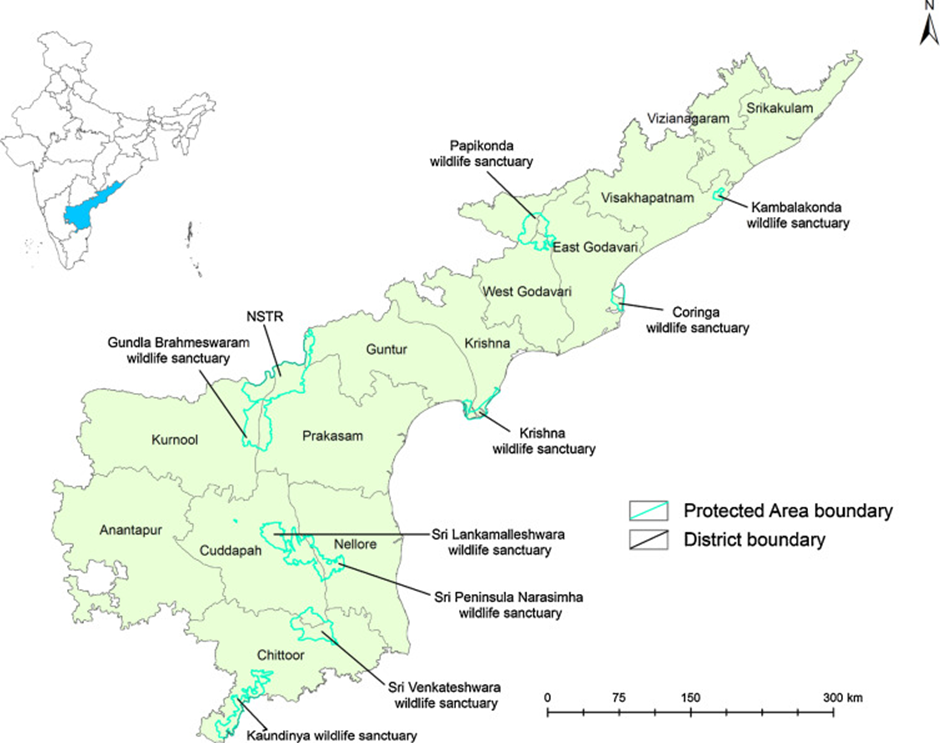
1. Location:
-
- Coringa Wildlife Sanctuary is located in the East Godavari district of Andhra Pradesh, near the port city of Kakinada.
- Spread over 235.7 sq km, it is one of the largest mangrove forests in India and is situated along the Godavari River estuary.
- The sanctuary is an important part of the Godavari mangrove ecosystem, playing a crucial role in protecting the coastal region from erosion and supporting rich biodiversity.
2. Flora and Fauna:
-
- The flora of Coringa Wildlife Sanctuary primarily consists of mangrove forests, with dominant species such as Avicennia, Rhizophora, Sonneratia, and Aegiceras.
- The sanctuary is interspersed with tidal creeks, mudflats, and estuarine waters, creating a unique habitat for both terrestrial and aquatic life.
- The fauna includes mammals, birds, reptiles, and marine species, making it an ecologically diverse region.
- It is home to the critically endangered white-backed vulture and long-billed vulture, along with other bird species like kingfishers, egrets, and herons.
- Fishing cats, smooth-coated otters, jackals, and wild boars are among the prominent mammals found here.
- The water bodies support estuarine crocodiles, olive ridley sea turtles, and several fish species, making it a vital marine ecosystem.
|
UPSC CSE PYQs
Q1. Which of the following countries are well known as the two largest cocoa producers in the world? (2024)
Answer: Option C
Q2. With reference to the river Luni, which one of the following statements is correct? (2010)
Answer: Option D
Q3. Manikaran in Himachal Pradesh is known for: (CDS-I/2022)
Answer: Option B |

